15 Best Vegetable Garden Ideas for a Productive & Beautiful Garden
Vegetable gardening is more than just a hobby; it’s a way to connect with nature, enjoy the freshest produce, and reduce your carbon footprint.
Whether you have a sprawling backyard or a small balcony, creating a vegetable garden can provide a sense of accomplishment and a delicious reward.
However, a successful vegetable garden isn’t just about planting seeds and watching them grow. Creative planning and thoughtful execution are key to maximizing your space and harvest.
To spark your imagination, we’ve rounded up 15 vegetable garden ideas that are perfect for gardeners of all skill levels.
From raised beds to companion planting, these ideas will help you get the most out of your vegetable patch.
Key Considerations Before You Begin
Before jumping into the creative ideas, consider these factors to set your vegetable garden up for success:
- Location: Choose a sunny spot, as most vegetables require at least six hours of direct sunlight daily.
- Soil: High-quality soil enriched with compost can make a significant difference in plant health and yield.
- Watering System: Plan a convenient way to water your plants, whether through drip irrigation, sprinklers, or manual watering.
- Growing Zone: Select vegetables suited to your climate to ensure they thrive.
Now that you’ve got the basics down, here are 15 innovative vegetable garden ideas to try.
15 Vegetable Garden Ideas
1. Elevate with Raised Beds
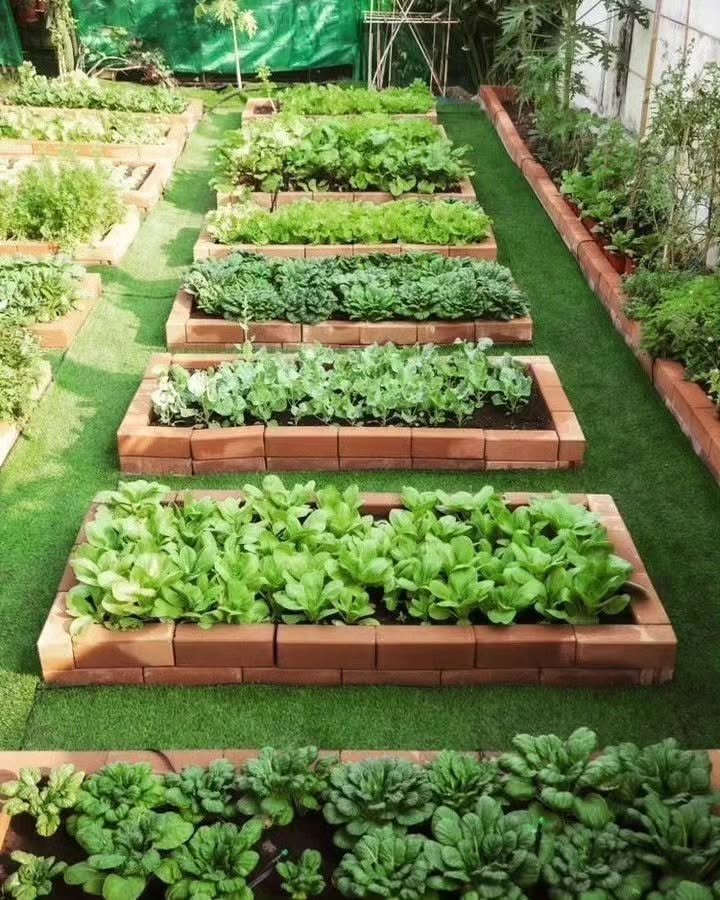
If you’re looking to reduce strain on your back and knees (and enhance the aesthetics of your garden), raised beds are the way to go.
These elevated garden boxes not only make gardening more accessible but also allow you to control soil composition and ensure proper drainage. Whether you’re growing vegetables, flowers, or herbs, raised beds give your plants the best possible environment to thrive.
Plus, they help protect your plants from pests like rabbits and prevent soil compaction caused by foot traffic.
2. Grow in Containers
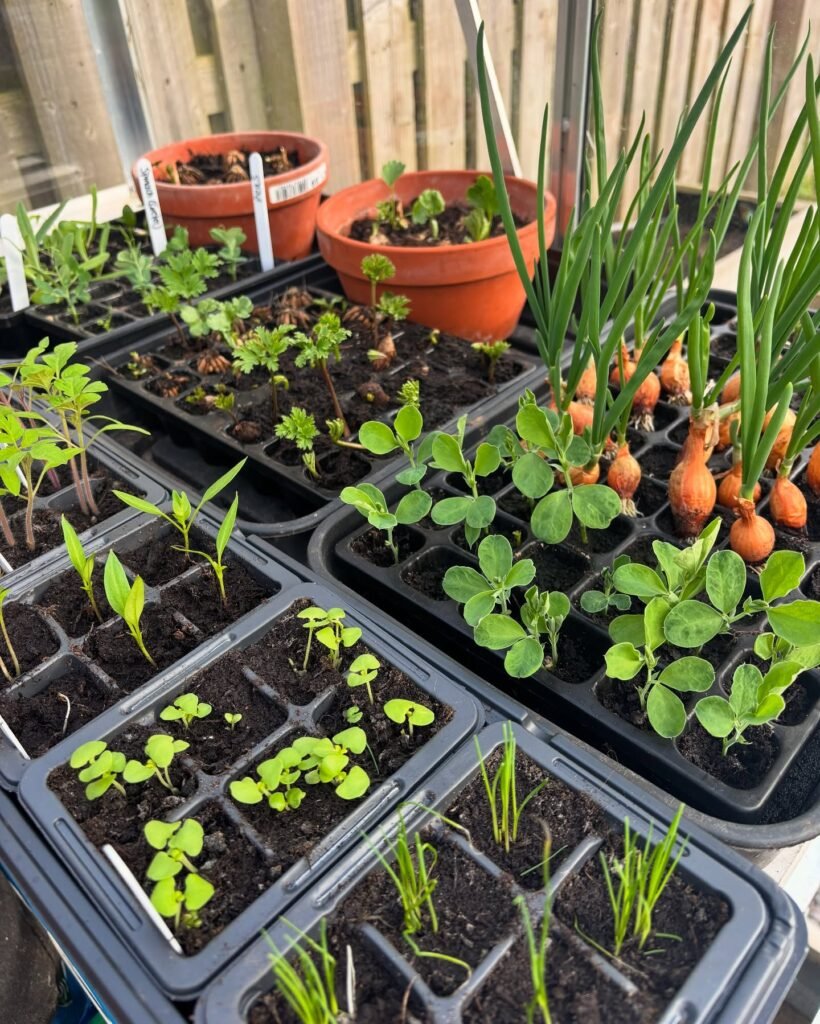
Limited on space? Growing vegetables in containers is a flexible and practical option, perfect for patios, balconies, or even small backyards.
With containers, you can move pots around to maximize sunlight exposure, protect plants from harsh weather, or simply change up your garden’s layout.
This method works especially well for herbs, tomatoes, peppers, and even root vegetables like carrots or potatoes if you choose deeper pots. Use lightweight pots for easy mobility and ensure proper drainage by adding holes at the bottom.
3. Try Companion Planting

Companion planting isn’t just creative; it’s also highly practical and eco-friendly. By pairing plants that complement each other, you can boost productivity, improve soil health, and deter pests naturally without relying on chemical solutions.
For instance, marigolds can repel nematodes and other harmful insects when planted near tomatoes, while basil planted alongside peppers can improve flavor and growth.
The “Three Sisters” technique—with corn, squash, and beans—is a classic example where each plant supports the growth of the others. Squash covers the ground to prevent weeds, corn provides a natural trellis for beans, and beans enhance the soil by fixing nitrogen.
4. Add a Trellis for Vining Crops

Support vine-growing plants like beans, cucumbers, peas, and even climbing squash by installing a trellis or utilizing an existing fence in your garden.
Growing vertically not only saves valuable ground space but also helps improve airflow around the plants, reducing the chances of diseases caused by overcrowding. Harvesting vining crops becomes much easier when they’re off the ground, saving you time and effort.
For an added touch of charm, consider using recycled materials such as old ladders, wooden pallets, or wire mesh to create a rustic yet functional trellis.
5. Use Pollinator-Friendly Plants
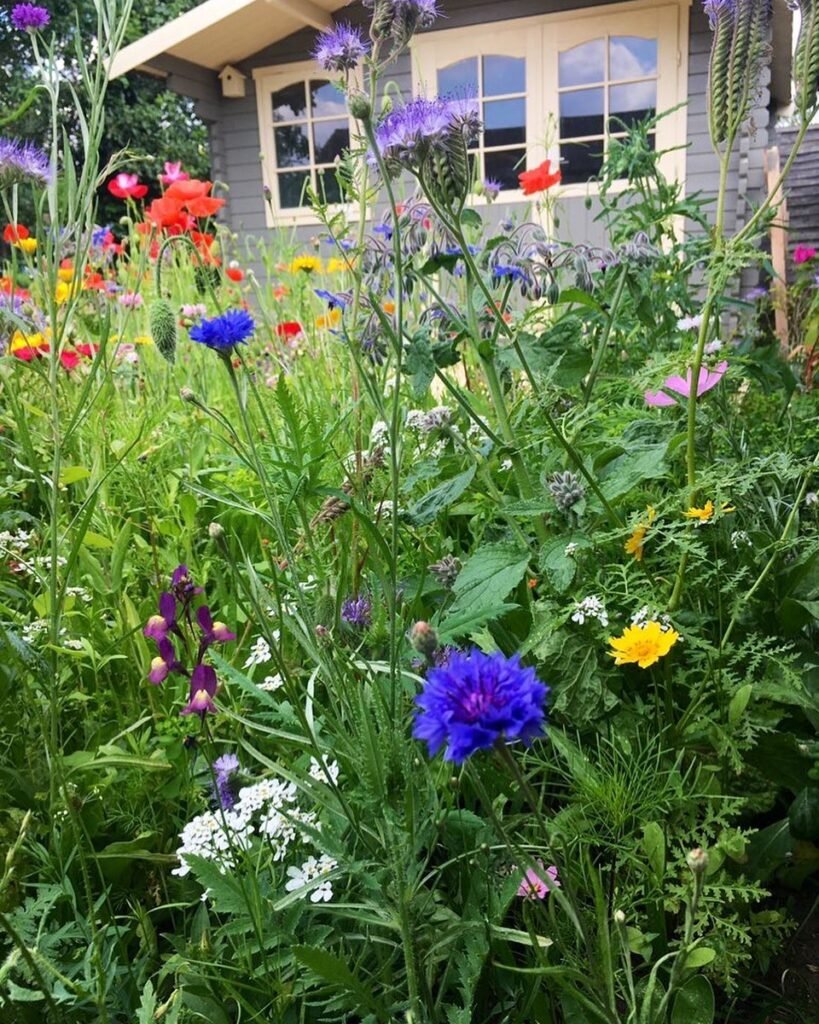
Boost vegetable crop yields by planting flowers that attract beneficial pollinators such as bees, butterflies, and hummingbirds.
Pollinators play a vital role in ensuring your plants produce fruit, so adding varieties like sunflowers, marigolds, lavender, and zinnias around your vegetable patch can make a big difference.
These plants not only draw in pollinators but also add a splash of color and beauty to your garden. Be sure to avoid using harsh pesticides that may harm these helpful creatures and opt for natural pest control methods instead.
6. Opt for a Balcony Garden
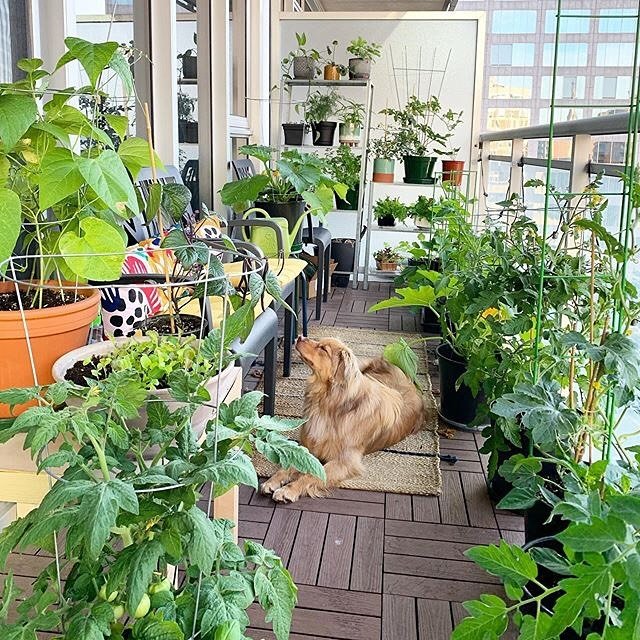
If you live in an apartment or have limited outdoor space, balcony gardens are a perfect solution for growing fresh vegetables and herbs. Use railing planters, vertical garden structures, or hanging baskets to make the most of your space.
Crops like lettuce, strawberries, cherry tomatoes, and dwarf peppers are ideal for small containers and thrive in compact environments. If your balcony is partially shaded, choose plants that do well with limited sunlight, such as spinach, kale, or parsley.
Don’t forget to use lightweight pots and be mindful of water drainage to keep your balcony clean.
7. Incorporate Composting

Healthy plants start with healthy soil, and composting is one of the easiest ways to enrich your garden soil naturally.
Add organic matter like kitchen scraps, grass clippings, coffee grounds, and leaves to create nutrient-rich compost that improves soil structure and boosts its water retention. Homemade compost is not only cost-effective but also an environmentally friendly way to reduce waste.
Set up a small compost bin or pile in your garden, or if you’re short on space, try vermicomposting with worms. Your plants—and the planet—will thank you.
8. Experiment with Block Planting
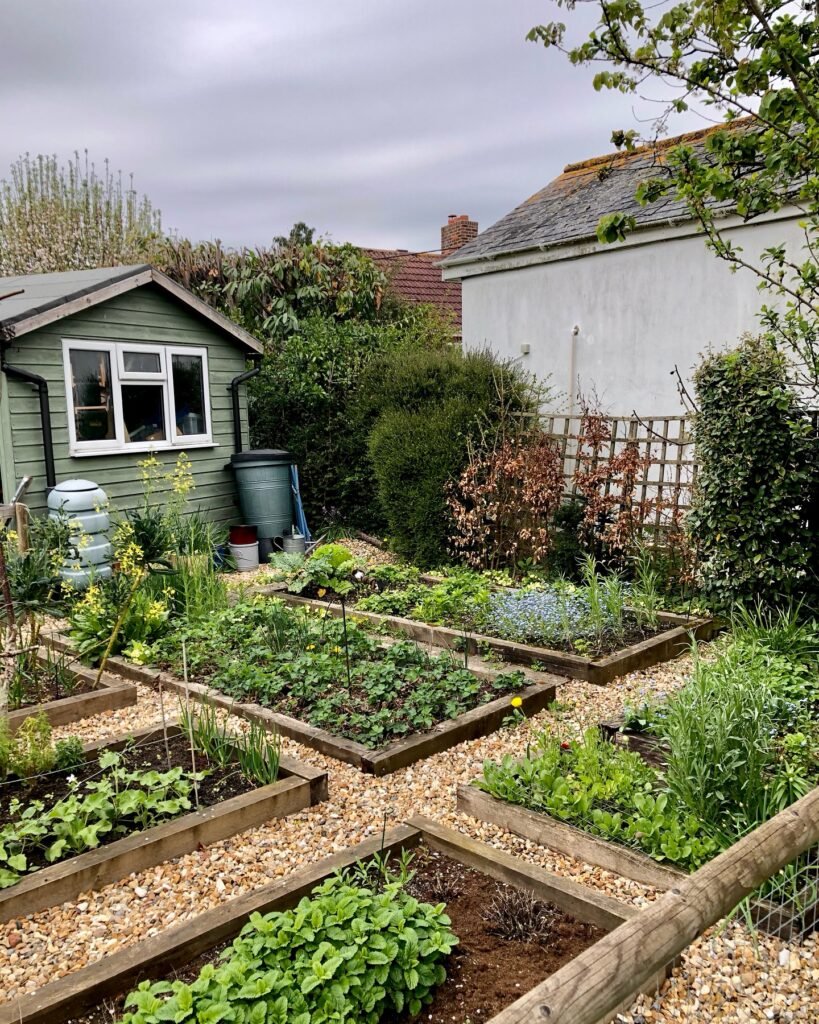
Instead of traditional rows, try block planting to maximize your garden’s productivity, especially if you’re working with limited space. This method involves planting vegetables in dense patches instead of neat rows, allowing you to grow more food in a smaller area.
Crops like carrots, lettuce, radishes, and beets respond especially well to this technique. Block planting also helps with weed suppression, as the close spacing leaves little room for weeds to grow.
Just be sure to thin out seedlings as they grow to maintain proper airflow and prevent overcrowding.
9. Grow Nitrogen-Fixers
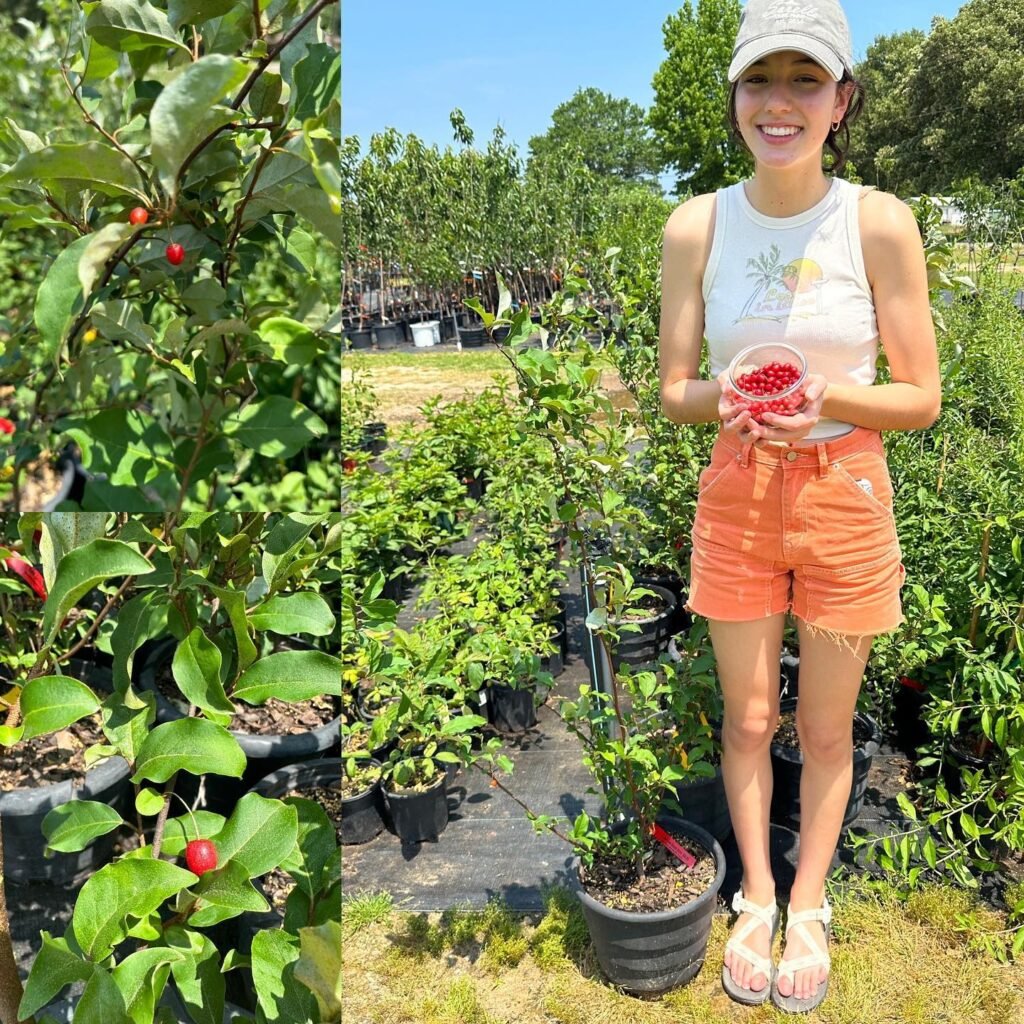
Enhance your soil’s fertility naturally by planting nitrogen-fixing plants like beans, peas, and clover.
These plants form a symbiotic relationship with soil bacteria, converting nitrogen from the air into a form that enriches the soil.
Not only do they prepare the ground for future crops, but they also reduce the need for synthetic fertilizers, saving you time and money while promoting sustainable gardening.
10. Integrate Edible Landscaping
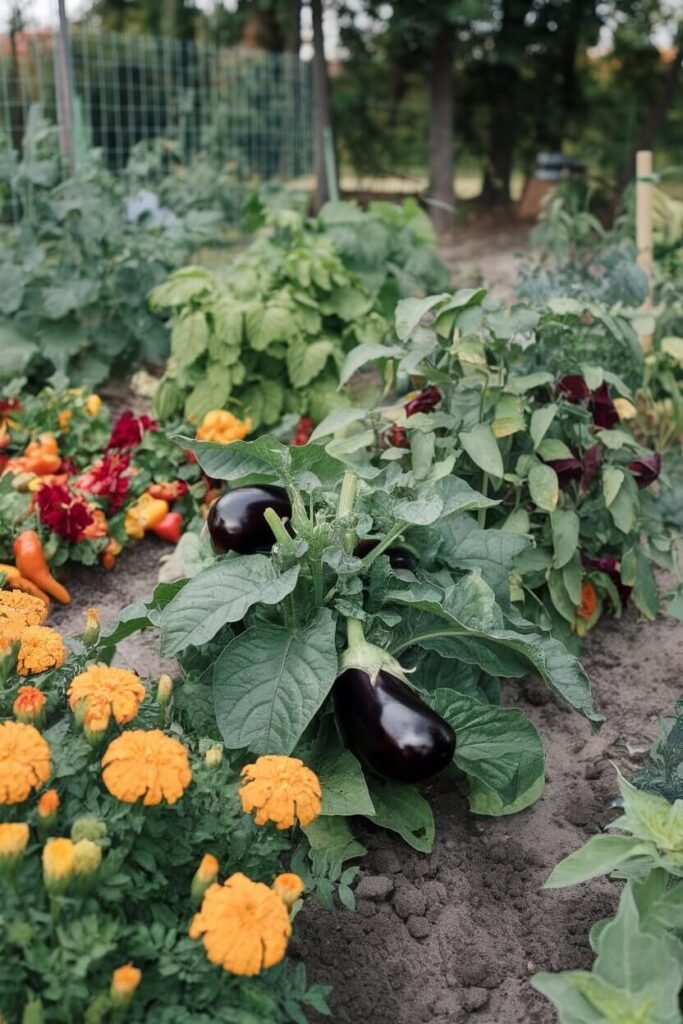
Combine aesthetics and functionality by incorporating edible plants into your landscaping design.
Blend flowers and vegetables in the same garden bed for a vibrant, productive space. For example, eggplants with their glossy leaves, colorful peppers, and marigolds with their bright blooms create a stunning visual display while producing a bountiful harvest.
This approach makes the most of your space and turns your garden into a multi-functional, eye-catching area.
11. Use Ground Covers for Weed Control
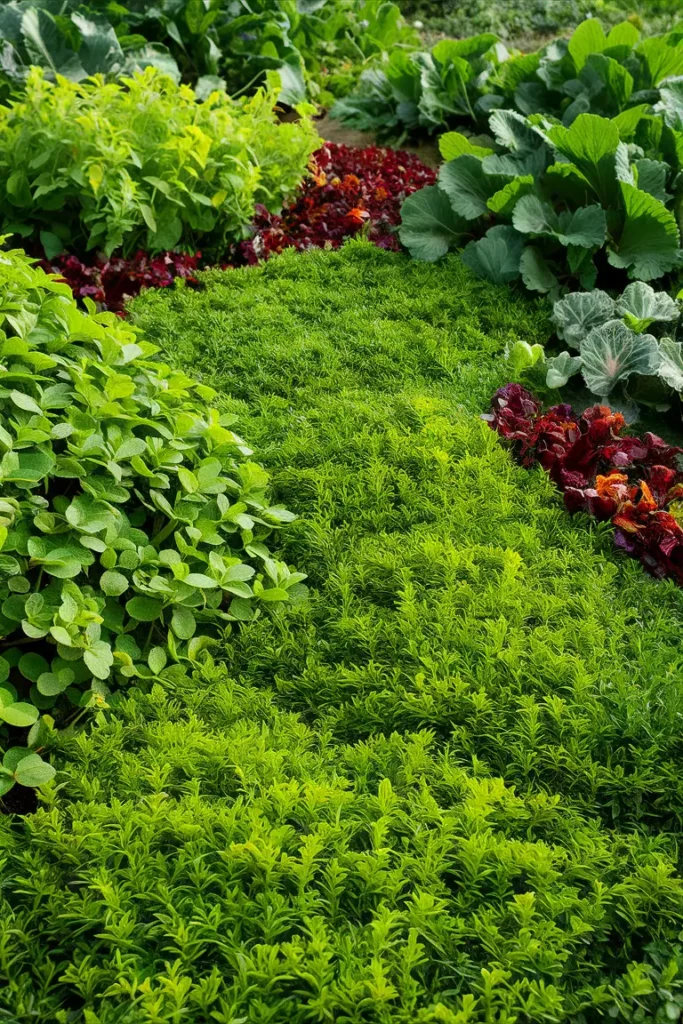
Ground cover plants, such as creeping thyme or clover, are a multitasking solution for your garden.
They suppress weeds by crowding them out, help retain soil moisture, and maintain consistent soil temperatures, protecting your plants from extreme weather conditions.
These low-growing plants are especially valuable in larger vegetable gardens, where they can help cut down on maintenance while improving overall soil health.
12. Plant a Canopy Layer

Create a garden with multiple levels by planting a canopy layer of compact fruit trees like apple, peach, or plum.
Beneath them, grow vegetables, herbs, or shade-tolerant crops such as lettuces and spinach in the understory.
This layered approach maximizes the use of vertical space, protects delicate crops from harsh sun, and encourages a more diverse ecosystem within your garden by mimicking natural forests.
13. Protect Crops from Pests Naturally

Keep your garden pest-free without relying on chemicals by planting insect-repelling plants. Chives, onions, and basil can deter common garden invaders like aphids and beetles while adding flavor to your kitchen.
Marigolds are particularly effective against aphids, nematodes, and even whiteflies. Combine these with other natural pest deterrents, such as companion planting or introducing beneficial insects like ladybugs, for a holistic approach to pest control.
14. Keep a Garden Journal

A garden journal is an indispensable tool for staying organized and improving your gardening skills. Record key details like planting dates, growth observations, soil amendments, weather conditions, and pest incidents.
Take note of what thrives in your garden and what doesn’t, so you can make better decisions in the future.
Over time, your journal will become a valuable resource for adjusting your practices and maximizing your garden’s potential.
15. Add a Water Feature
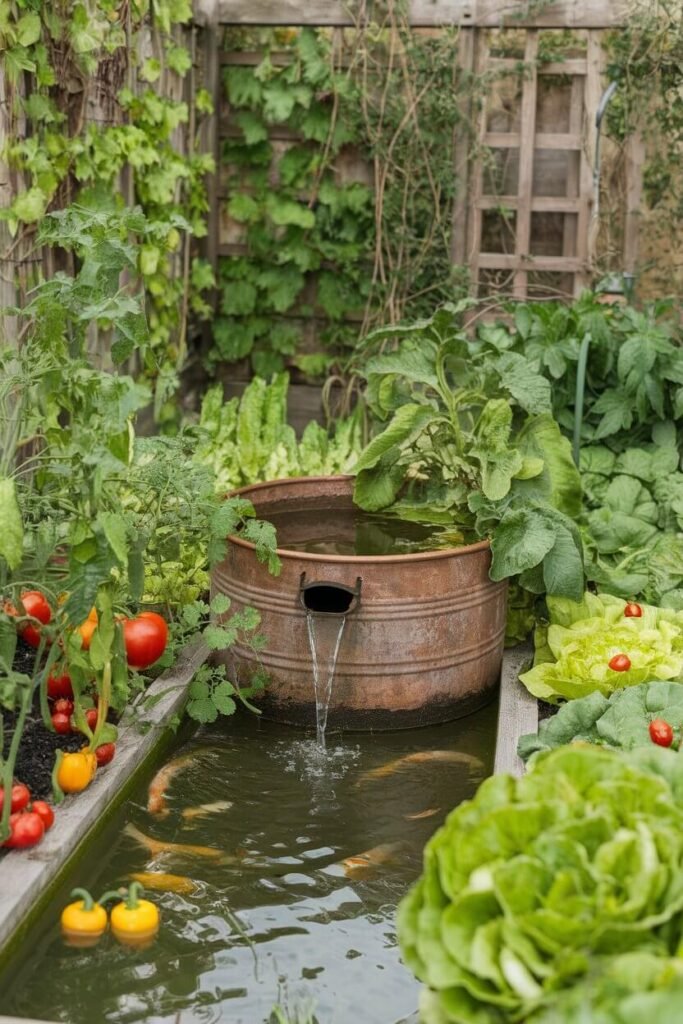
Transform your garden into a tranquil retreat by adding a small water feature. A birdbath, fountain, or even a rustic copper vat can elevate your garden’s ambiance while serving a functional purpose.
These features attract pollinators like bees and butterflies, as well as beneficial insects and birds that help with pest control.
A water feature also makes your garden more welcoming, turning it into a peaceful space to relax and enjoy nature.
FAQs
How much sunlight do vegetable gardens need?
Most vegetables require at least 6–8 hours of direct sunlight daily. If your space has limited sun, opt for shade-tolerant crops like spinach, kale, and lettuce.
What’s the best way to water a vegetable garden?
The best watering system for your garden depends on its size and location. Drip irrigation systems are efficient for larger gardens, while hand watering or sprinklers work well for smaller spaces.
How can you control pests without chemicals?
Companion planting with insect-repelling plants (like basil or marigolds), introducing beneficial insects (like ladybugs), and using homemade sprays (such as garlic or neem oil) can help manage pests naturally.
Can you grow vegetables indoors?
Yes! Crops like herbs, lettuce, and dwarf tomatoes thrive indoors with proper sunlight or grow lights and containers.
Sum Up
Creating a vegetable garden doesn’t have to be daunting. With these 15 ideas, you can design a space that suits your needs, no matter the size of your yard or balcony.
From raised beds to composting and companion planting, there’s something for every gardener to explore.
Start planning today and take the first step toward a healthier, more sustainable lifestyle. Whether you’re an experienced green thumb or just starting out, unlocking the potential of your vegetable garden is a rewarding endeavor. Happy Gardening!

